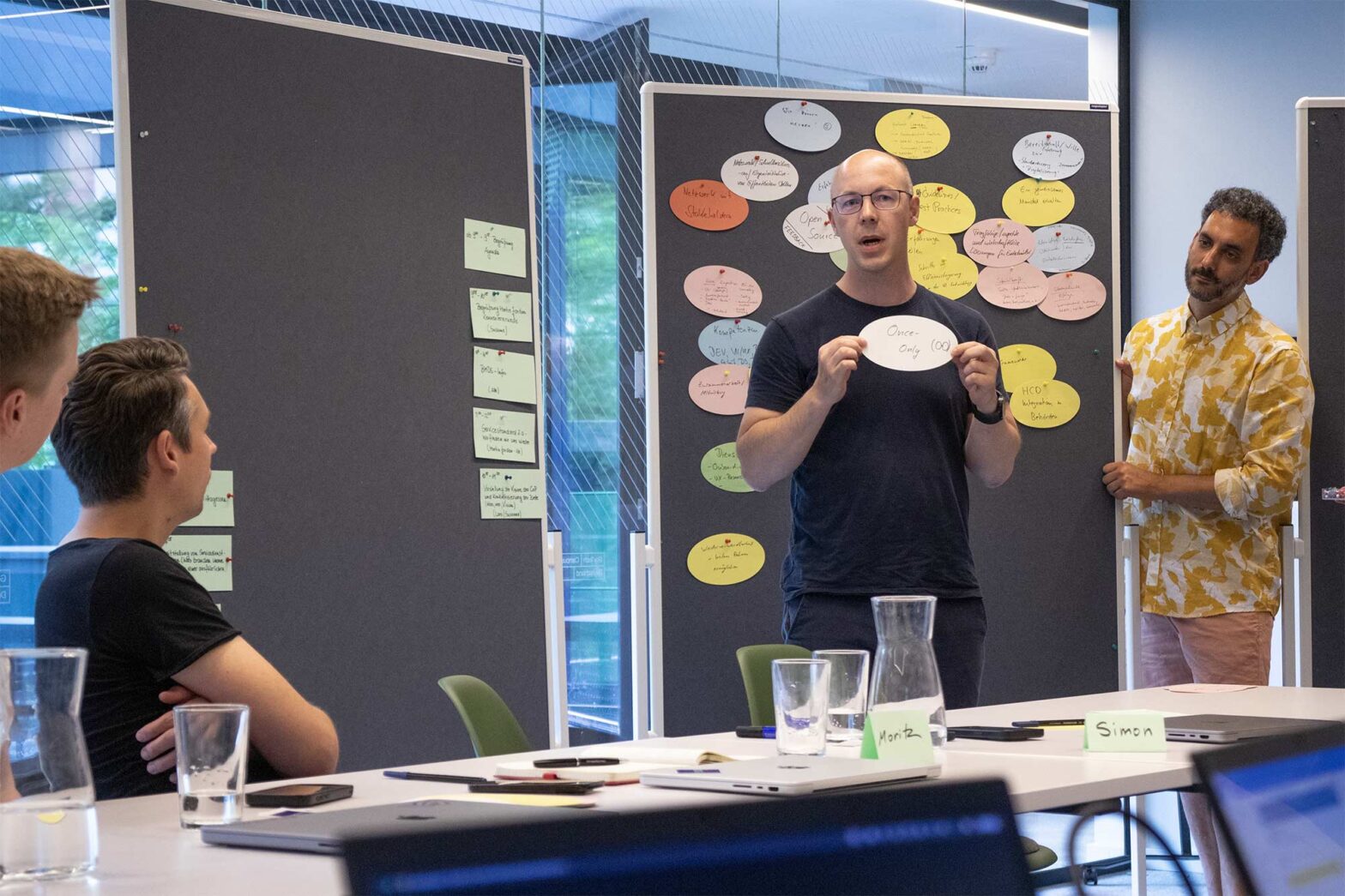As expected, this week was a busy one.
Gathering to discuss design libraries
On Wednesday, representatives from 4 different government units gathered at the GovTech Campus to possibly join up design pattern libraries and overall user-centred design work.
The IT system house of the Federal Ministry for Work and Social Affairs invited to the gathering. This was already the second edition after the other participants met close to Nuremberg several weeks ago. At the time, I was unable to join them. This time, they met 15 minutes walk away from me. Also in the room were Dataport, the northern states’ IT and digital outcome provider, and the Federal IT Competence Centre, ITZBund.
After general introductions, I gave an overview of our Service Standard work. I emphasised how the standard should give them additional leverage for the design work they intend to do and to advance. This resonated with quite a few of the people present. One person in the room had contributed to the DIN specification, and another one had served as a peer in our standard peer reviews last autumn.
We met for almost 6 hours, and had an open and collaborative conversation, but ultimately, I still struggled to see a common thread. I understood most of the people’s high-level objectives and motivations, but only to a limited degree. It will take more work to figure out how we can effectively join forces and support each other. Some obvious strands for collaboration are unlocking specific tools like Figma, making the case for a robust user research set-up, or connecting overlapping work in particular service areas.
Representing our accessibility efforts
On Tuesday afternoon, I was invited to speak at the Google Web AI Accessibility Day. It was an afternoon event bringing together some 70 accessibility-minded people from across Germany. They gathered in Google’s Berlin office, a short walk from where I live. Most attendees work in private sector businesses, ranging from e-commerce to consultancies. Google folks presented an update to a study they have been running for 2 years, assessing the accessibility of Germany‘s biggest e-commerce platforms. The report only found a slight improvement – just 2 weeks until the EU accessibility act is fully enforced for private businesses, too.
Arrived for Google’s AI #Accessibility Day 2025 — to talk about ‘Practical accessibility with pizza 🍕 and partnerships’ together with colleagues from DeliveryHero, IKEA, and Zalando. Looking forward to some cross-sector exchange about our practice.
— Martin Jordan (@martinjordan.com) June 17, 2025 at 3:08 PM
[image or embed]
There were some generally interesting stats as part of the introduction presentation. Apparently, over 70% of Netflix users have subtitles activated. Among Gen Z, some 80% of the users have them on.
I had the duty and honour to do the first input. I titled my talk “Practical accessibility with pizza and partnerships“. In the talk, I gave a 20-minute overview of our accessibility culture, tools, and overall practice. The slides are – as usual – on GitHub.
After the talk, I received a good half dozen questions that I could mostly answer. A few, for example, on arguing for the business case of accessibility, I gave broader responses to. Depending on the type of business, the argument for reaching out to the user group can be stronger or weaker. Shortly after my talk, I had to leave. Hence, I missed presentations from accessibility specialists from IKEA, Delivery Hero, and Zalando. With a few people, I had the chance to briefly connect, so that we can pick up the conversation another time soon.
Topic-related, focused, cross-industry exchanges like these feel quite rare. So, I am genuinely grateful for the opportunity.
Seeing another scope for government domain management
On Wednesday, only had the pleasure to join an expert interview and exchange Cybersecurity and Infrastructure Security Agency (CISA) on domain management. My colleague Lena led the conversation and I did a bit of note-taking.
Since discovering the excellent work on get.gov, we were interested in hearing more about the work of the people behind it and the approaches. Unfortunately, some of the blog posts disappeared with the closure of 18F.
The 3 colleagues from CISA who joined gave insights into the work in the most tangible way. After introductions and answering some questions for 20 minutes, they went into full demo mode and generously showed them all of their real service flows and also the tools behind. They even offered to unlock a version for us to explore further after the call. Their can-do spirit and general approach were really inspiring for the 3 of us on our side. We learned how much more work goes into their efforts over the years and how much broader and deeper their work goes.
Interestingly, despite their working in the open approach, we were the only other country to contact them and ask them for an exchange call, apart from UK colleagues with whom they have been in touch fora while.
After now 3 international exchanges, I hope we can use some of the broader approaches to domain management we have seen to inform the leadership of our responsible ministry.
What’s next
Next week, I will join a panel on accessibility and inclusion at the Zukunftskongress. I participated in one last year, which was okay, but it didn’t lead to any significant insights or new connections. It was about learning from implementing the Online Access Law. This year, the topic is a little more specific, but it’s still quite broad.
Also, I will finally have lunch with SPRIND’s Head of UX Design, Arne.

